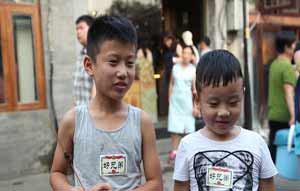Architectural elements of classical design in Jiangsu
Updated: 2013-10-07 07:25
By Chen Congzhou (China Daily)
|
||||||||
Classical gardens in Jiangsu province were mostly built adjacent to private residences. The past owners of the gardens were usually retired government officials, who took the natural landscape as their model for creating artistic garden scenery. They would invite the social elite to gatherings in their gardens.
The gardens were therefore, in effect, a continuation of the living space, which gave rise to the practice of a lifestyle of leisure and refined pursuits sought by intellectuals.
This preference featured idealized routines of daily life, including reading, painting, writing and reading out poetry, playing music, tasting tea and wine, playing chess and banqueting.
The practical nature of garden living hence required the gardens to be functional with architectural structures of a great variety, all designed to be in tune with the grace of the natural landscape of the garden.
As such, the crafting of classical gardens was designed to create a utilitarian as well as aesthetic living space where the natural and manmade worlds were closely incorporated. The following aspects were all considered:
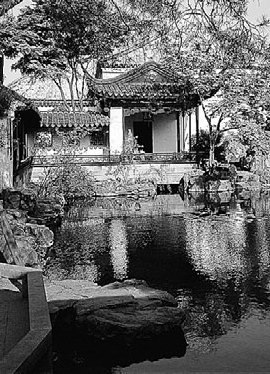
1. Water features
Some garden designers used water features as the theme of the garden. Bodies of water located in the middle of the garden were surrounded by pavilions and halls connected by verandas. Small bridges crossed the water to provide easy access. In a large pond, it was advisable to add some islets.
Situated near the Yangtze River, Jiangsu has the advantage of easy access to the river to build water features. In addition to artistic concerns, the ponds and streams were also used to provide irrigation and lessen the risk of fire.
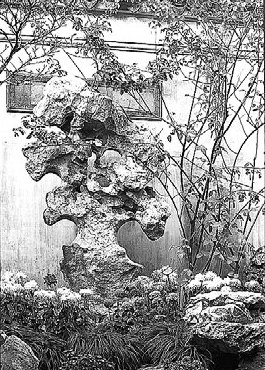
2. Rockeries
Excavating earth to make ponds or artificial hills was part of the designer's pursuit of natural beauty. When there was no readily available water source or low land within the garden, it became necessary to use hills and rocks as themes to accentuate the landscape.
During the Qing dynasty (1644-1911), the use of lake stones in rockery design became popular. The number of rockeries and the quality of each single rockery then became the sole criterion for evaluating the superiority of a garden.
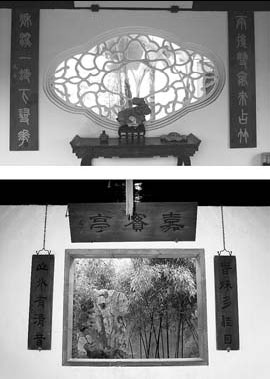
3. Plants
Plants in a garden are like hair on a person, making up an essential element of the garden's ecological environment. They can be set against hills, around ponds and near constructions to form picturesque scenery.
The chosen plants were usually traditional local species, planted naturally to form a landscape of mountain forests, which change colors in different seasons. Among them, ancient trees were of special value, as they served as silent witnesses of history. In Jiangsu's gardens, trees older than 100 years are commonly found.
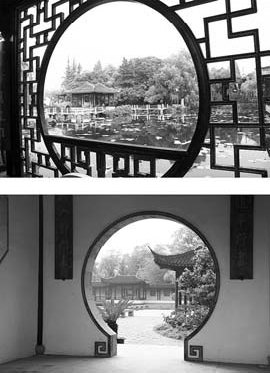
4. Picture windows
Many halls and verandas opened to gardens through picture windows that frame the landscape and bring the outdoors inside. Unlike a static painting, the objects in the window change color and content in different seasons and weather conditions, and the view moves, as wind blows bamboo or a bird comes into the frame.
Photos by Lou Qingxi for China Daily
(China Daily 10/07/2013 page4)

 Victoria Beckham S/S 2014 presented during NYFW
Victoria Beckham S/S 2014 presented during NYFW
 'Despicable' minions upset Depp's 'Lone Ranger' at box office
'Despicable' minions upset Depp's 'Lone Ranger' at box office
 'Taken 2' grabs movie box office crown
'Taken 2' grabs movie box office crown
 Rihanna's 'Diamonds' tops UK pop chart
Rihanna's 'Diamonds' tops UK pop chart
 Fans get look at vintage Rolling Stones
Fans get look at vintage Rolling Stones
 Celebrities attend Power of Women event
Celebrities attend Power of Women event
 Ang Lee breaks 'every rule' to make unlikely new Life of Pi film
Ang Lee breaks 'every rule' to make unlikely new Life of Pi film
 Rihanna almost thrown out of nightclub
Rihanna almost thrown out of nightclub
Most Viewed
Editor's Picks
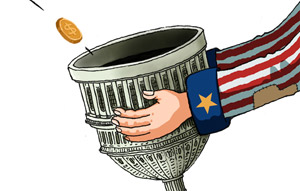
|

|

|

|

|

|
Today's Top News
Going green can make good money sense
Senate leader 'confident' fiscal crisis can be averted
China's Sept CPI rose 3.1%
No new findings over Arafat's death: official
Detained US citizen dies in Egypt
Investment week kicks off in Dallas
Chinese firm joins UK airport enterprise
Trending news across China
US Weekly

|

|

